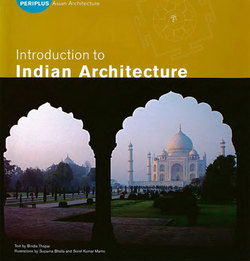Читать книгу Introduction to Indian Architecture - Bindia Thapar - Страница 6
На сайте Литреса книга снята с продажи.
ОглавлениеContents
| Introduction | 10 |
| Residential Spaces | 16 |
| Vernacular Architecture | 18 |
| Elements of Space and Decoration | 20 |
| Architecture and Science | 22 |
| Architecture and Water | 24 |
| Water Palaces and Pavilions | 26 |
| Early Architecture | 28 |
| The Vaastu Shastra | 30 |
| Sacred Buddhist Spaces | 32 |
| The Rock-cut Architecture of Ajanta | 36 |
| Building in the Himalayas | 40 |
| Sacred Hindu Architecture | 42 |
| Hindu Rock-cut Temples | 44 |
| The Evolution of the Hindu Temple | 46 |
| The Dravidian Style | 48 |
| The Pancha Ratha at Mamallapuram | 50 |
| The Brihadishwara Temple at Thanjavur | 52 |
| Architecture of the Vijayanagara Dynasty | 54 |
| The Temples of Kerala | 56 |
| Temple Towns of the South | 58 |
| The Nagara Style | 60 |
| The Sun Temple at Konarak | 62 |
| The Nagara Style of Central India | 64 |
| Solanki Architecture | 66 |
| Hoysala Architecture | 68 |
| The Terracotta Temples of Bengal | 70 |
| Sacred Jain Architecture | 72 |
| The Jain Temples of Mount Abu | 74 |
| Sacred Islamic Architecture | 76 |
| The Evolution of Islamic Styles | 78 |
| The Sultanate Style | 80 |
| The Quwwat ul Islam Mosque | 82 |
| The Mughal Style | 84 |
| The Taj Mahal | 90 |
| Later Mughal Architecture | 96 |
| Provincial Styles | 98 |
| Sacred Sikh Architecture | 102 |
| Secular Spaces: The Fort | 104 |
| Secular Spaces: The Palace | 106 |
| The Rajput Fort and Palace | 108 |
| The Gwalior Fort and Palace | 112 |
| The Red Fort at Delhi | 114 |
| Palaces of South India | 116 |
| Fatehpur Sikri | 118 |
| Colonial Architecture | 122 |
| The Colonial Church | 124 |
| The Colonial Fort | 126 |
| Commemorative Architecture | 128 |
| Civic Buildings | 130 |
| Colonial Bungalows | 132 |
| Indo-Colonial Architecture | 134 |
| Lutyens' Delhi | 136 |
| Modern Architecture and Le Corbusier | 138 |
| Architecture in India Today | 140 |
| Glossary | 143 |
| Bibliography | 144 |
The ancient hill fort of Gwalior, gateway to central India, which stretches 3 kilometers across a 100-meter-high rocky plateau. Its long and eventful history led to an interesting amalgam of Hindu, Jain and Islamic architectural features. The fort encompasses a number of palaces, temples and tanks.
